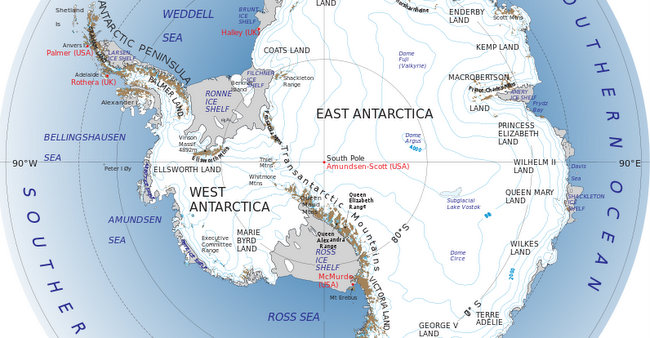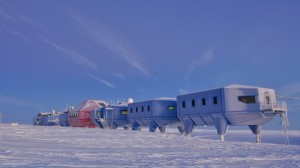
McMurdo Station, Antarctica. (Source: USAP.gov)
Regarding our post about Christmas carols in Antarctica, Nathaniel Frissel (KC4/W2NAF) at the McMurdo Station in Antarctica writes:
Hi, everyone! Merry Christmas!
We had a wonderful time singing over the radio from Antarctica this year on 7995 kHz. We heard carols not only from McMurdo Station, but many of the other bases and remote field camps as well. This includes South Pole Station (American), Mario Zuchelli Station (Italian), Siple Dome Station (Italian), Grounding Station (American), Diamond Hills Field Camp (We think!) (American), and Science Event I-196 (American).
I have already received SWL reports from a number of listeners, and am very happy to report that a number of operators reported that they heard Hark the Herald Angels
Sing come through the static for about 30 seconds. This transmission originated from South Pole Station. So far, these reports have come from the Netherlands, Germany, and Australia. A few US stations believe they heard the transmission as well. Many reported using the University of Twente Web SDR.
Here are some recordings you can listen to:
Hark the Herald Angels Sing transmitted from South Pole Station recorded on 7995 kHz USB with U of Twente Web SDR (Netherlands):
http://youtu.be/KY7Qhhd6C3w
Hark the Herald Angels Sing transmitted from South Pole Station recorded on 7995 kHz USB from MacOps (McMurdo):
http://youtu.be/0q4gFNWdBK0
We Wish You a Merry Christmas transmitted from McMurdo Station (Recorded live in McMurdo): http://youtu.be/TAaWGlwq4B0
Your e-mail reports made everyone very happy down here. We are all very excited to receive Christmas greetings from around the world!
Merry Christmas, and VY 73 from the Ice,
Nathaniel, KC4/W2NAF
——————————————–
McMurdo Station – Deck the Halls
Mario Zuchelli (Italian Base) – Italian Christmas Carol
McMurdo Station – Let It Snow
Siple Dome – Anges We Have Heard On High (in Italian)
McMurdo Station – Little Drummer Boy
South Pole Station – Jingle Bells
Grounding Station – Grandma Got Run Over by a Reindeer
Diamond Hills Field Camp – Silent Night (with Ukelele Accompaniment)
Mario Zuchelli Station – Adeste Fideles
South Pole Station – Joy to the World
Siple Dome – Silent Night (in Italian)
McMurdo Station – 12 McMurdo Days of Christmas
Science Event I-196 -Rudolph the Red Nose Reindeer
Siple Dome – Adeste Fideles
McMurdo Station – We Wish You a Merry Christmas
South Pole Station – Hark the Herald Angels Sing (Reported heard by SWL Stations)
Nathaniel, I’m so happy to hear your signal was heard around the world. I listened, but never heard your carols break through the static; in truth, conditions were less than favorable here. I did make a spectrum recording, and will go back through it again.
Here’s wishing you and all of your colleagues and family a very Merry Christmas!
 Many thanks to those of you who made a video or audio recording of your reception of the 2015 BBC Antarctic Midwinter Broadcast.
Many thanks to those of you who made a video or audio recording of your reception of the 2015 BBC Antarctic Midwinter Broadcast.



